Disrupting Matrices
Curated by Claire Kiester
September 19th - October 19th 2024
Organizer Series
Hodges Taylor
1414 S Tryon St
Unit 130
Charlotte, NC 28203
Manipulating Matrices celebrates the art of printmaking. The exhibition includes exciting work from contemporary printmakers across the country. Techniques range from screen printing and relief - to mezzotint and lithography.
Learn more about the pieces and artists below ︎︎︎
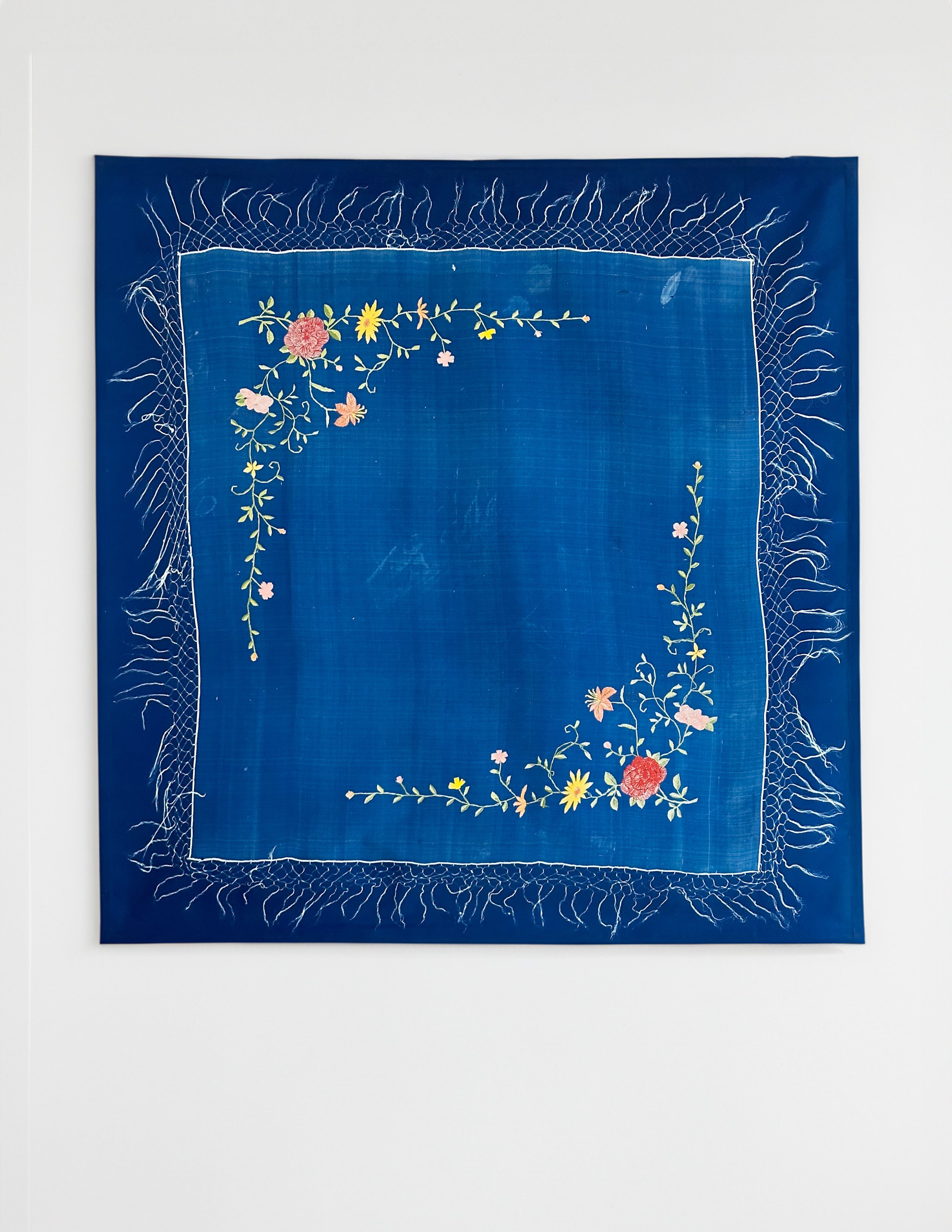
For Janet
2024
Screenprint and Cyanotype on fabric.
44.75" x 43.5" x.5"
$1800 (not available until after June 2025)
Cyanotype print of a vintage hand-sewn silk piano scarf with hand-drawn and screen printed embroidery. Completed in memory of my mother-in-law who had a similar one among her things that I found when we cleaned out her house this summer. Part of a series called "Women's Work" that I revisit periodically in my art practice. This work celebrates the unknown women who created beauty as well as utility in their everyday things.
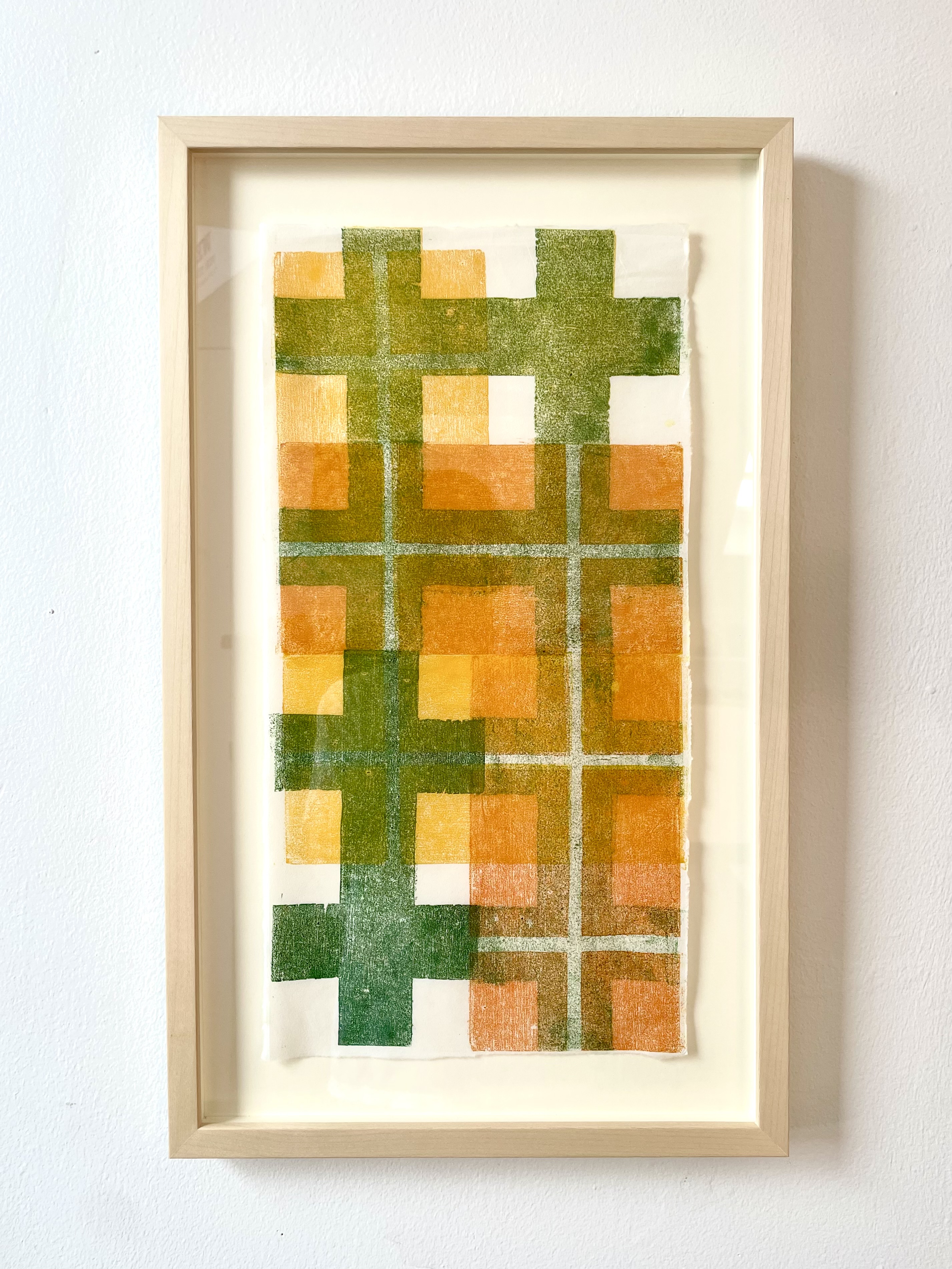
Orange and Green
2021
Oil based ink on paper.
12.75” x 1” x 21”
$90
Multi-layer relief print made using the front and back of one block of wood.

Corktown Bricks (Search for The City of Gold)
2024
Lithograph and Silkscreen
15” x 20” x 1”
$350 (unframed)
$475 (framed)
“Corktown Bricks (search for The City of Gold)" combines modern rustbelt ephemera with historic elements in a internal exploration of era and aura, growth and decay. The title refers to the historic Irish neighborhood of Detroit and it's brick-paved streets as well as to the classic Cadillac Eldorado automobile of the region's prolific manufacturing era.

Unbroken
2023
Stone Lithograph & Woodcut on Kozuke Japanese paper.
9.5” x 9.5”
$800
My family have killed deer for generations.
I did not expect to follow that pattern until I hit a whitetail buck with my Honda Civic in November of 2022. By January of 2023, I was still haunted enough by that moment to be sketching the deer to transfer its image onto lithographic limestone.
The reductive lithographic process, also called manière noire, involves covering a limestone matrix in an even layer of dark greasy material, then using a knife to scratch the stone clean where light areas are desired. The flat stone, when processed for printing, holds ink in the areas where grease remains. I spent months carefully scraping each hair of the deer as a contemplation of the things I could control and the things I could not: remembering the hunters I chose not to join, my car’s repairs, and the delicate chemical process I was undertaking that could reject my image altogether.
By horrible coincidence, on my first pass through the printing press, my stone cracked along the portion of my image where the real deer itself had been hit. It crumbled to pieces along the injury I’d spent so long drawing, and rendered the two remaining halves of my matrix impossible to print by themselves.
I got into my car with its brand-new fender, hood, and windshield, and drove to the hardware store. I returned with a ratchet-strap to force the stone pieces together, and was able to print an entire edition cleanly, despite a portion of the deer’s body missing.
Typically, when a lithograph is complete, a printmaker will grind a layer of stone off the matrix’s surface to reveal fresh limestone for a new image. After the debacle this stone had endured, I decided the deer would be its final print. For the second and third layers, I carved a block of wood: rendering first the speedometer on my car, then outlines of my father, his father, and his grandfather hunting through the years. I also used carved layers to fill in the lost area on the body of the deer, and to emphasize the contrast between the detail lithography can provide and the expressiveness of woodcut.
The resulting image is a reflection on resilience, on returning to concepts, griefs, and matrices, and on the contrasting circles in which I am powerless and where my volition makes lasting change—Unbroken.
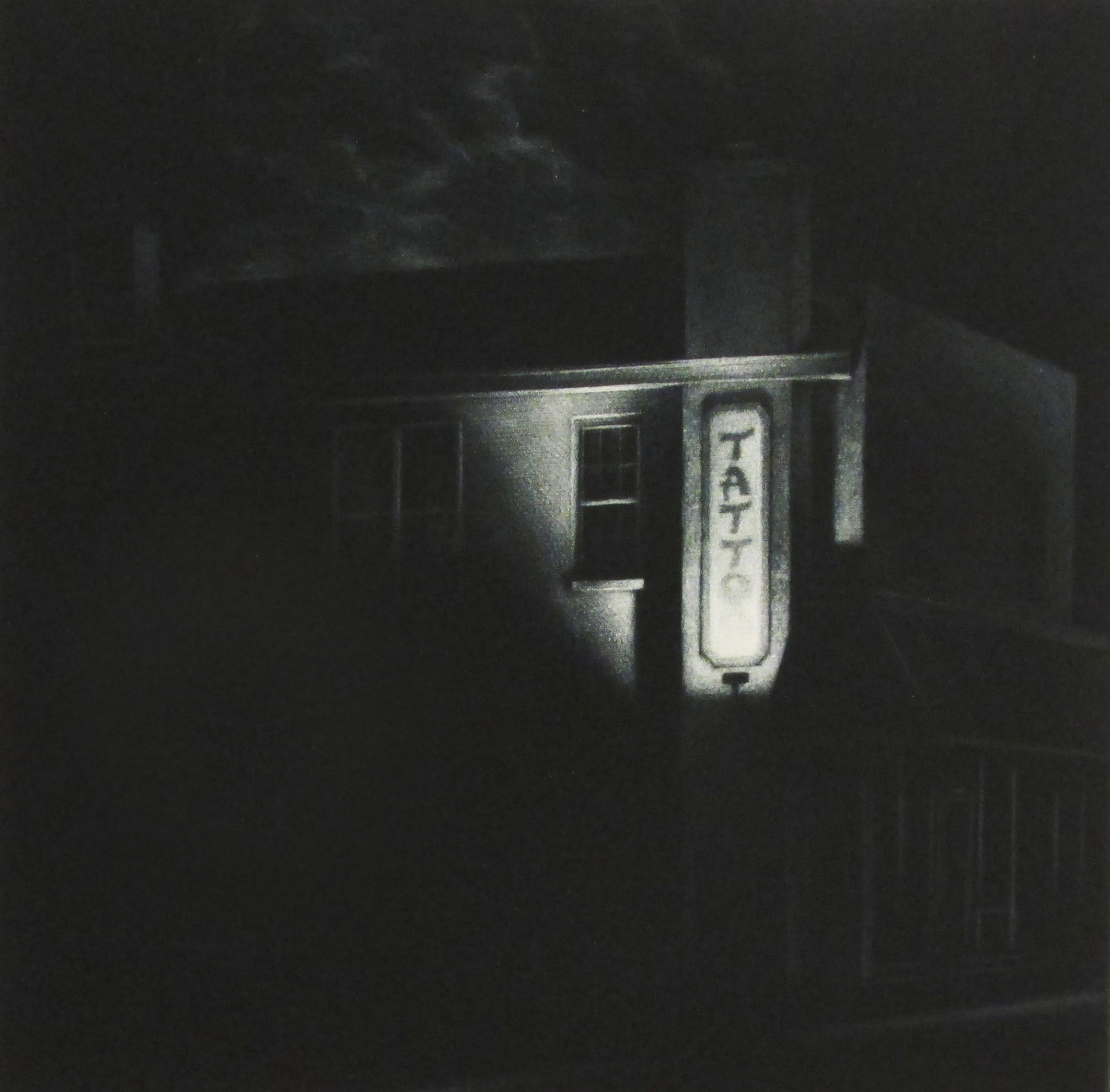
3:20 a.m
2015
Mezzotint.
12” x 12”
$450
An urban nightscape with an illuminated tattoo sign.


Two Guys Fighting
2023
Risograph.
8” x 8”
$100
Risograph print based on a gouache sketch of two robots fighting.
Cable Fossil 1
2023
Aquatint Etching.
12” x 17”
$350
Cable Fossil 1 is an Etching with Aquatint printed on fine Japanese Paper. It depicts USB cables rising from the ground like flames.

Split Fold I, Split Fold II, Split Fold III
2024
Screenprint.
7" x 7" (each)
$300 (each)
These are hand drawn positives of collaged photos of fabric arranged as a still life. The images transition their forms of mark making from hatching to stippling, adding subtle variation to their cohesion. This triptych connects the physical act of making artwork with the possibility of the material depicted. Disparate segments are pieced together to initiate new forms.
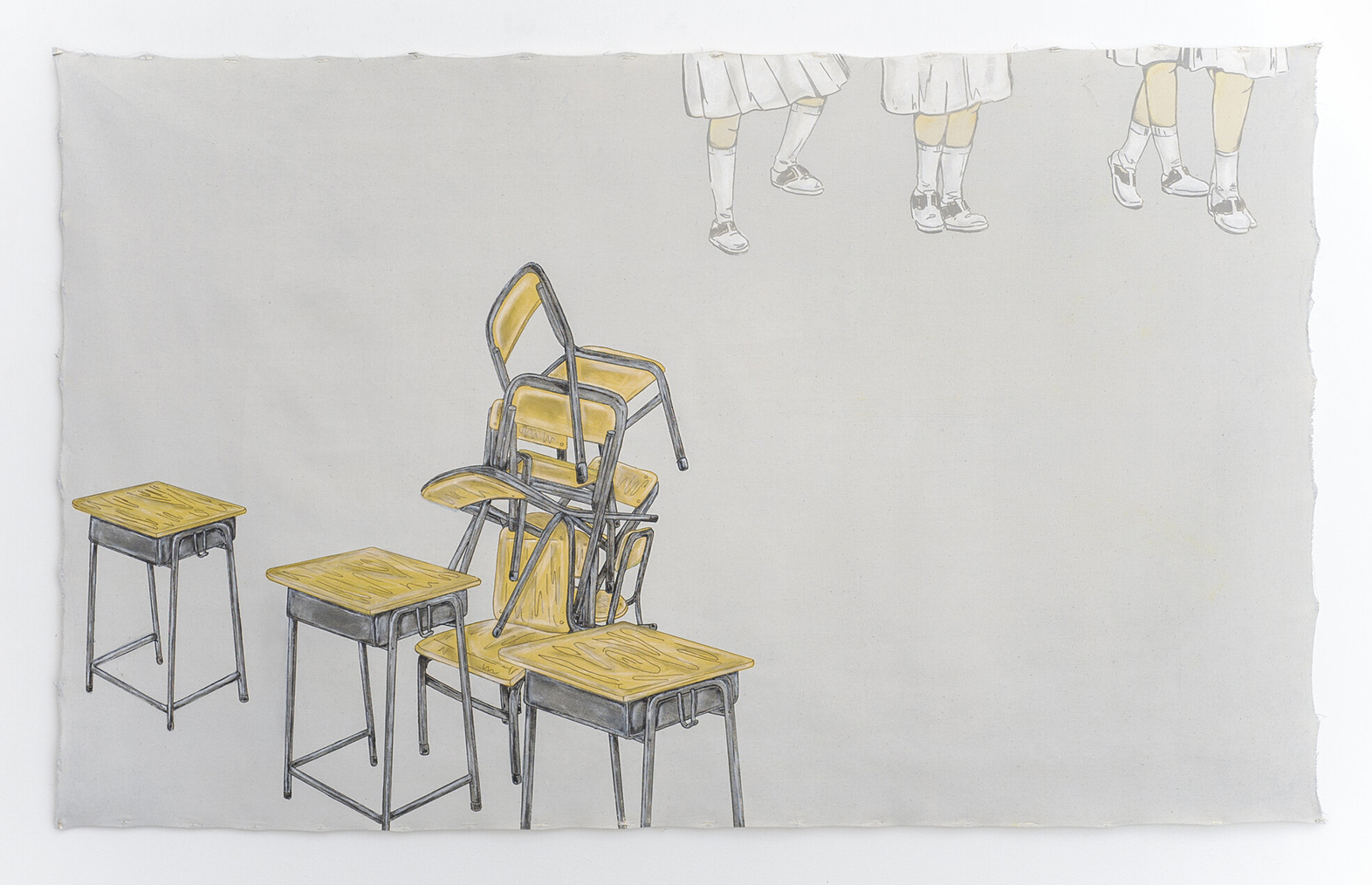
Making Progress But More Effort Needed
2020
Screenprint on fabric with hand painted details.
33.5” x 54.5”
NFS
A reflection upon my childhood experience in Hong Kong, this work represents the structure of life and the uniformity in what is expected of us. It is a form of societal and familial pressure that shapes and forms you to conform to what is expected. This work is about breaking the sense of uniformity and not conforming, despite the sense of confusion and frustration such a rebellion might bring.
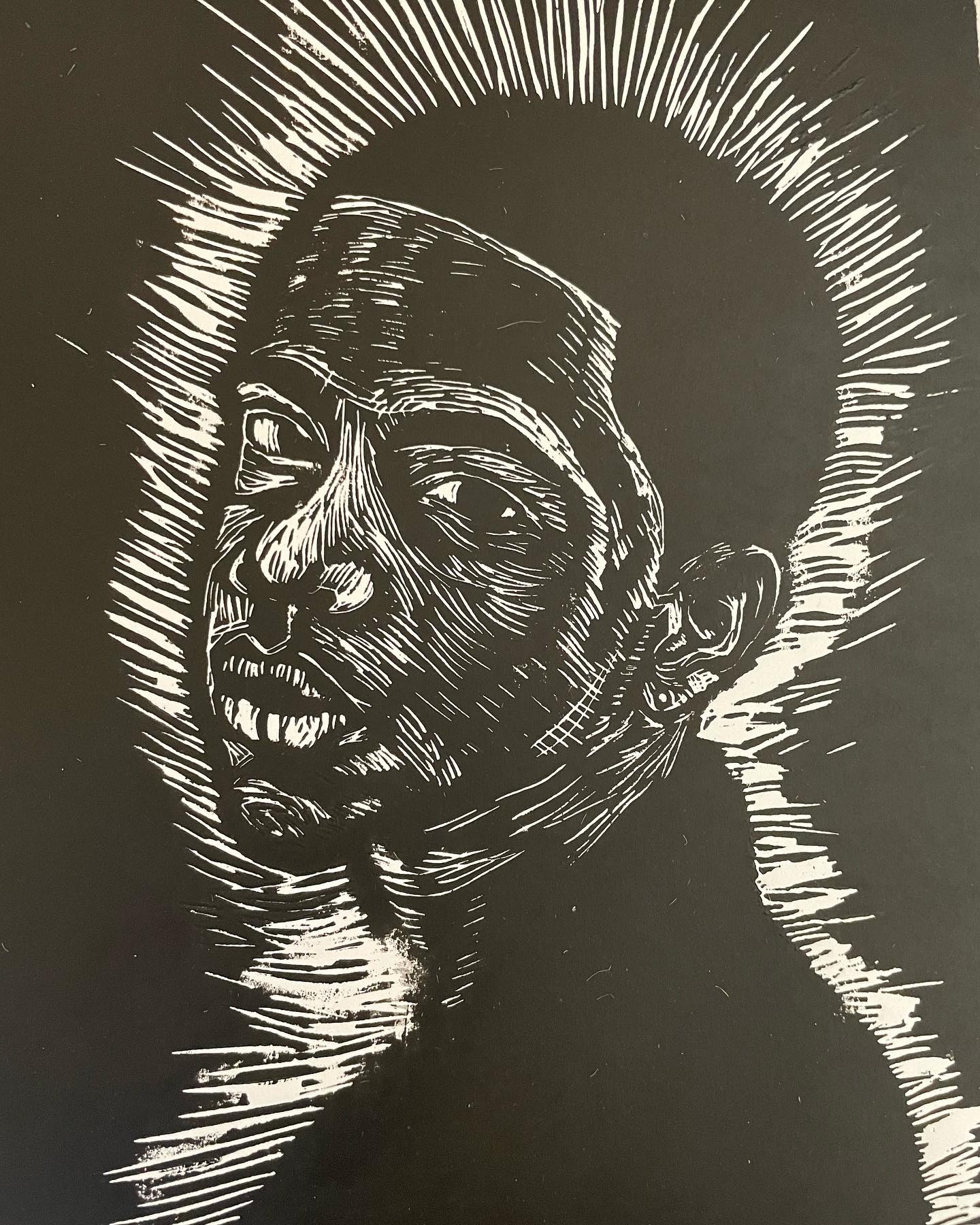
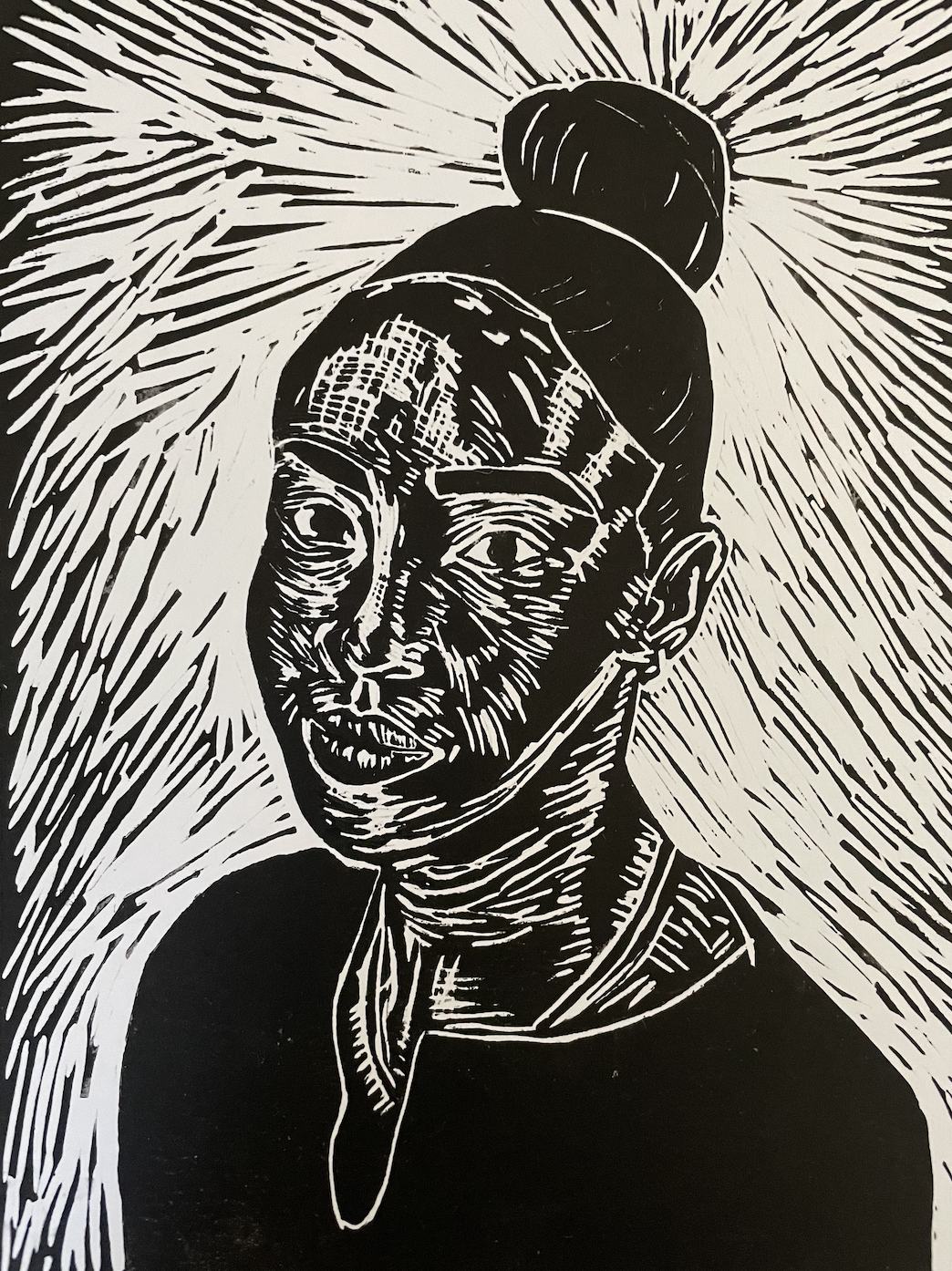
Javan
2021
Linocut print.
12” x 9”
NFS
Linocut print on paper.
Chanel
2021
Linocut print.
12” x 9”
$125
Linocut print on paper.
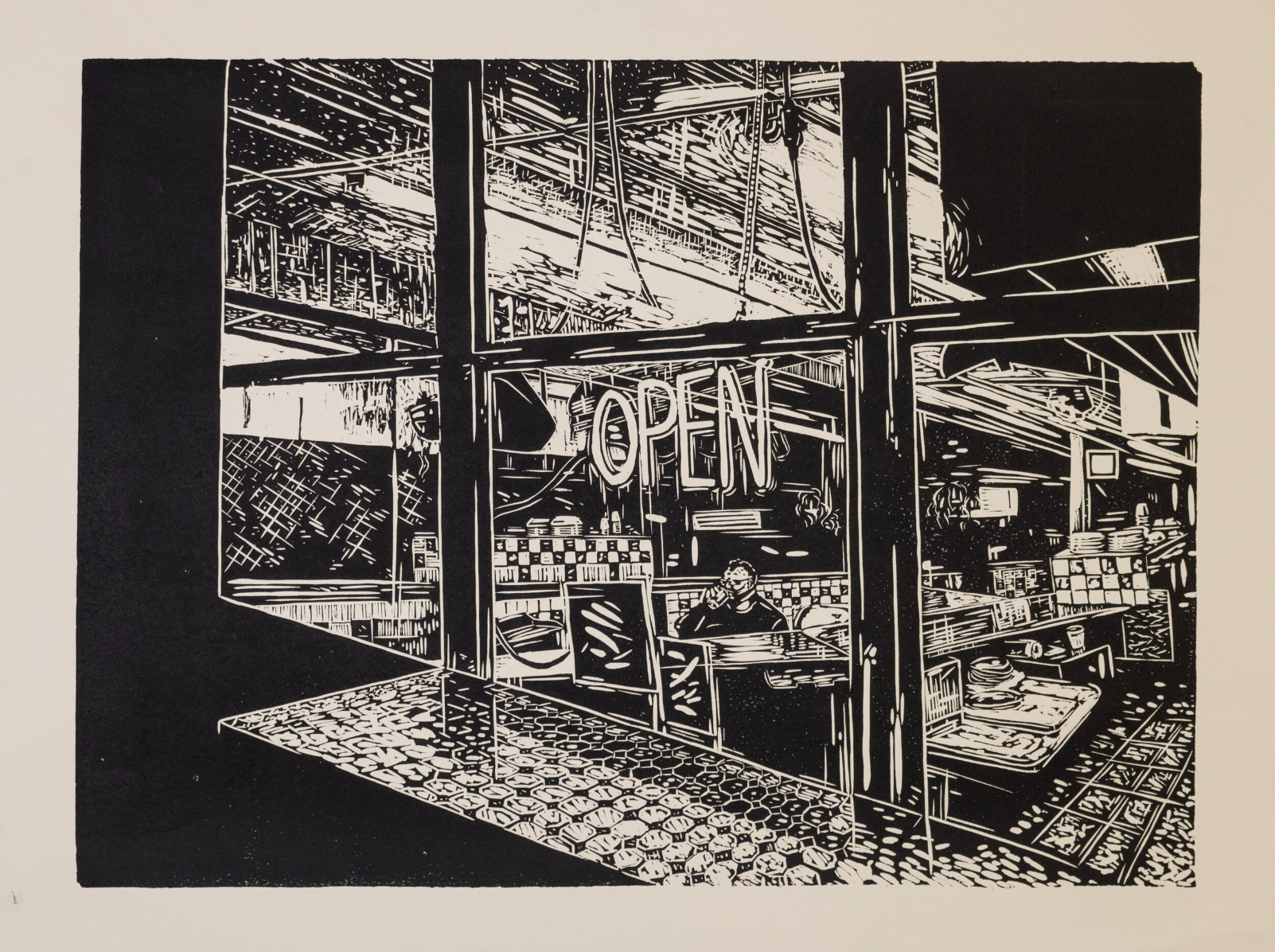
Saturday Night At The Allende
2019
Linocut print.
$650 (framed)
$300 (unframed)
This print is inspired by Allende Restaurant, located in Chicago's Lincoln Park neighborhood. Paloma's work is an ongoing and flawed exploration of modern American identity, viewed through the lens of commercial architecture and the contemporary urban environment. Her subject matter draws from her collection of street photographs, which feature taco shops like Allende, along with laundromats, diners, gas stations, and dive bars.
Through varied mark-making techniques, Paloma commemorates the essence of these structures, considering her works as portraits of buildings that share a visual language of convenience—a language that transcends both physical and generational distance. By using the reductive process of carving and the multiplicative process of printing, she seeks to preserve and share the distinct sensory details of the spaces she inhabits.